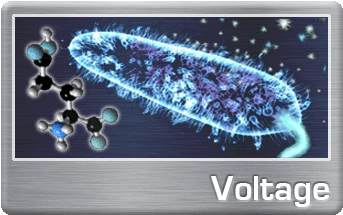Team:Cambridge/Voltage
From 2008.igem.org
| Line 20: | Line 20: | ||
In order to simulate neural activity in bacteria, a mechanism resembling a synapse is necessary. This is the aim of the Voltage section of the Cambridge iBRAIN project. At the synapse, neurotransmitter molecules are released from the presynaptic plasma membrane. The neurotransmitter diffuses through the synaptic cleft and binds to chemical receptor molecules on the membrane of the postsynaptic cell. These receptors cause ion channels to open so that ions rush in or out, changing the transmembrane potential. Attempting to mimic this in a prokaryotic system is particularly attractive as, in a more general sense, it provides an interface between chemical or biological and electrical systems. | In order to simulate neural activity in bacteria, a mechanism resembling a synapse is necessary. This is the aim of the Voltage section of the Cambridge iBRAIN project. At the synapse, neurotransmitter molecules are released from the presynaptic plasma membrane. The neurotransmitter diffuses through the synaptic cleft and binds to chemical receptor molecules on the membrane of the postsynaptic cell. These receptors cause ion channels to open so that ions rush in or out, changing the transmembrane potential. Attempting to mimic this in a prokaryotic system is particularly attractive as, in a more general sense, it provides an interface between chemical or biological and electrical systems. | ||
| - | Using the iGEM synthetic biology concept, we identified genes which could contribute to a synapse-like response. To keep the system as simple and therefore feasible as possible the aim was to engineer E.coli to respond to a specific ligand by allowing a flux of ions which would be measurable as a small change in the voltage of the medium the cells are suspended in. The first step was to find prokaryotic ion channels which open or close in response to a particular molecule or small set of molecules. We searched the UniProt database (www.uniprot.org) and found that the organism Synechocystis PCC 6803 has a transmembrane protein, GluR0 (link) which is glutamate-gated, and allows flux of potassium ions when opened. We decided to try using the protein coding sequence of the gene for this channel. However, as the sequence came from a different organism, it was necessary to optimise the codons for expression in E.coli. We therefore decided to have the [[IGEM:Cambridge/2008/Notebook/Voltage/GluR0 Manipulation| GluRo Biobrick plasmid]] we had designed synthesised by DNA2.0. | + | Using the iGEM synthetic biology concept, we identified genes which could contribute to a synapse-like response. To keep the system as simple and therefore feasible as possible the aim was to engineer E.coli to respond to a specific ligand by allowing a flux of ions which would be measurable as a small change in the voltage of the medium the cells are suspended in. The first step was to find prokaryotic ion channels which open or close in response to a particular molecule or small set of molecules. We searched the UniProt database (www.uniprot.org) and found that the organism [[http://www.ebi.ac.uk/2can/genomes/bacteria/Synechocystis.html |Synechocystis PCC 6803]] has a transmembrane protein, GluR0 (link) which is glutamate-gated, and allows flux of potassium ions when opened. We decided to try using the protein coding sequence of the gene for this channel. However, as the sequence came from a different organism, it was necessary to optimise the codons for expression in E.coli. We therefore decided to have the [[IGEM:Cambridge/2008/Notebook/Voltage/GluR0 Manipulation| GluRo Biobrick plasmid]] we had designed synthesised by DNA2.0. |
Using the GluR0 channel defined our ion of interest as potassium. As potassium is a naturally present ion in organisms, E. coli has its own regulatory systems to control its concentration. However, our review of the literature suggested that E. coli only varies potassium concentration as a mechanism of osmoregulation. It has a number of proteins involved in this process: a potassium influx pump (Kdp), a potassium channel (Kch), and a potassium efflux channel (Kef). | Using the GluR0 channel defined our ion of interest as potassium. As potassium is a naturally present ion in organisms, E. coli has its own regulatory systems to control its concentration. However, our review of the literature suggested that E. coli only varies potassium concentration as a mechanism of osmoregulation. It has a number of proteins involved in this process: a potassium influx pump (Kdp), a potassium channel (Kch), and a potassium efflux channel (Kef). | ||
Revision as of 21:34, 28 October 2008
|
||
 "
"
